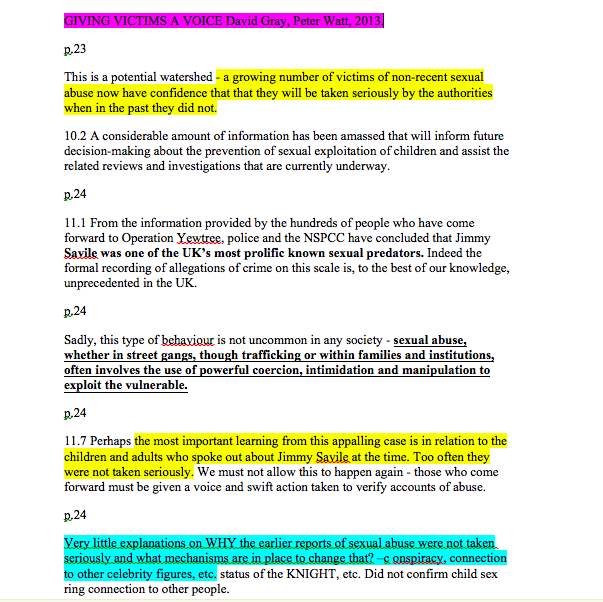I am a ghostwriter with 15 years of experience in the field of custom academic writing. This is a brief outline of my process of writing longer research papers that involve extensive research and references. These assignments typically have longer deadlines and require the writer to acquire some detailed/in-depth understanding of the topic. This process has helped me deal successfully with many academic assignments of master and post-graduate levels.
1. Read the textbook, class notes, or other background material
When I get an order, first I do extensive reading on the subject. The first step is to get a textbook – ideally, the client sends the textbook that is used in the course. Often we have textbooks available in our library at https://personal-writer.com/. A textbook is the first source of important background information, it provides a broad overview of the subject. I read the textbook to make sure I have the same understanding of the discipline as the client.
2. Note down important information in a special file
While I am looking through the textbook, I make notes in my Notes word document (Actually, it’s a Pages document, but one can certainly do it with Word). Sometimes I copy the entire paragraphs that are relevant to my assignment and paste it into my notes. I also write down the resource and page number of each passage for easier referencing later. I do not worry about copyright because this is my private document and I am using it only to gather the most relevant information in one place. I also note down why the paragraph in question is relevant for my paper. If the textbook cannot be copied, I just briefly write the main idea of the passage and note down the page in the textbook to get back to later if this information will be needed for my final paper. I often use highlights to visually mark the most interesting parts of the text.

While I am working with the textbook, I also notice the references to particular studies or other books that are applicable to my assignment. The textbook can point to the sources of quality information that can be investigated further. For example, it discusses the authors of some theories, the research studies on some subjects, etc. Some of these sources could be found online and investigated in more detail.
3. Read other books and articles relevant to your topic
After reading the textbook I have a general idea of what I am dealing with. The next step is to read some other books pertaining to the topic of the assignment. I can get the ideas of the relevant books from the class textbook or from a simple google search. Just like with the textbook, I note down everything interesting in my Notes file: I write down the author or authors, the title and publication year (it’s convenient for making correct in-text citations while writing the final paper), and after each pasted or noted paragraph, I write down the page number.
4. Find research studies pertaining to your topic on Google Scholar
After the books, I proceed to Google Scholar and look for relevant research articles that relate to my topic. When I mention the latest studies in the paper, the teacher will appreciate the depth of the research that went into the work. If my assignment includes coming up with a topic for the research (like in thesis assignments), studying these research papers helps me to identify gaps in the current research that can become my topic.
For assignments that include coming up with research topics, like thesis proposal, studying the latest research reports on Google Scholar helps me identify gaps in current research in my field.
It’s very convenient that Google Scholar shows the sources that are available in full text. In this way, I open preferentially these pages as I am interested in being able to access the entire study. I look through the study and take notes in a very similar way as I do when reading textbooks and books. If I find a recent study that is closely related to my research topic, I pay particular attention not only to the results of the study but to literature review as well: the authors have already done great research on selecting the most relevant previous sources, and I can incorporate the studies that they refer to in my paper too. I can find these sources using the bibliographical information on the reference page.
The literature review sections in the latest research reports on your topic are very helpful as they already contain synthesis of previous research and references to earlier sources and findings.
5. Identify sub-themes that came up in your research
When I am done with background reading, I re-read my Notes file. Sometimes it contains more than 100 pages of notes and copy-pasted paragraphs from different sources. I read through the notes and color-code the passages that correspond to particular sub-themes of my topic. Thus I start working with the structure of my paper.
6. Create a draft: decide on the structure of the paper and main arguments
Based on this review of the notes, I start composing a draft for my paper in the new Pages file. First I write down the structure of the paper. I do not spend time on the intro and conclusion as most often they are the last sections to write. First of all, I am interested in identifying sub-themes of my topic or coming up with a distinctive set of arguments or evidence for my thesis. I usually spend several days on this process, allowing the information from my literature study to sink in and the ideas to be assimilated in my subconscious mind. Then interesting perspectives or insights will pop up randomly as I am doing other activities, and I write them down on my phone or a piece of paper that I have for my desk for this project. Slowly this set of considerations is turned into a structure for the paper. I write down the sections that I identified, and then start to fill these sections with the information from my Notes file. I again copy-paste the info from the Notes file to the Draft file. I do it second time because in the Notes file, the information is presented in the order that I noted it as I read the literature. In the Draft file, I want the relevant info to be laid down right in the section where I need it.
In each section, I also write my own ideas, summaries, or observations and mark them with special color so that I know that this is my own text.
Create a draft by first writing headers for each section of your paper. These sections represent distinct arguments or positions pertaining to your topic or thesis. Then fill these sections with information you have in your Notes file, adding your own ideas, observations, or summaries.
7. Start writing your paper
Finally, I create another document, and this will be a final paper. Here, I do not copy-paste anything. All the text will be written from scratch. I will look at my Draft file and I will see what arguments I need to write about, and I have all the references, including the page numbers, available. Usually, I have at least 20-page draft file for a 7-8 page paper. This means that I will not be “paraphrasing” the text from the draft. I will be condensing it into my own narrative. I like when my text looks more like an analysis of the literature rather than a rewrite. It will sound like this: “This author believes that the main effects of the [studied phenomenon] are A,B, and C, based on this experiment conducted [somewhere] that showed [this and that] (in-text citation- author, year, page). However, [another researcher] challenges this view noting that the effects B can be due to [another factor] rather than the [studied phenomenon] (reference). The latest experimental study conducted by the [third author] (reference) confirms the second author’s observations".
Write your paper completely from scratch consulting the Draft document for information on each section. Do not just "paraphrase" what you have in the draft. Condense and analyze the information, draw your own comparisons, arguments, and conclusions.
8. Write introduction and conclusion
When I have written the body of the paper, I write the introduction and the conclusion. I take specific care to spell out the paper thesis in the intro and to go over the presented arguments in the conclusions. Then I will evaluate if the thesis can be confirmed or not taking into account the arguments and evidence. For me, it’s very important that the paper contains elements of my own analysis and presents my observations or recommendations regarding the topic. I do not simply retell what some researchers have written before me, unless that assignment asks specifically for that.
9. References, citations, proofreading, and rounding up.
After I’m done with the text, I do the References (or Works Cited) page, check all my in-text citations, and proof-read the paper one or two times. I use Grammarly to help me spot some awkward sentences or errors.
This is pretty much it, and depending on the client, the process may include more steps to ensure that the client approves the topic, selected evidence, structure and direction of the paper, etc.
The variety of topics always keeps me engaged and focused, and I get feedback from clients and their teachers, which means that I improve my analytical, research, and writing skills with every completed paper.
Having said all that, my main advice to students who needs to write academic papers is this: do not be intimidated by the seeming difficulty of research paper writing. When you understand enough about the topic itself, the writing will happen almost automatically. Therefore, spend some time on reading and understanding the topic, reflect on what you want to say. Even if your writing itself os not perfect, your sincere efort of understanding and exploring the subject will definitely be noted.
And if for some reason your find yourself in circumstances when you cannot write your paper, our service is here to help you. We guarantee personalized approach and 100% papers written by experienced writers.
Check our very democratic prices and contact us for a more personalized quote.






